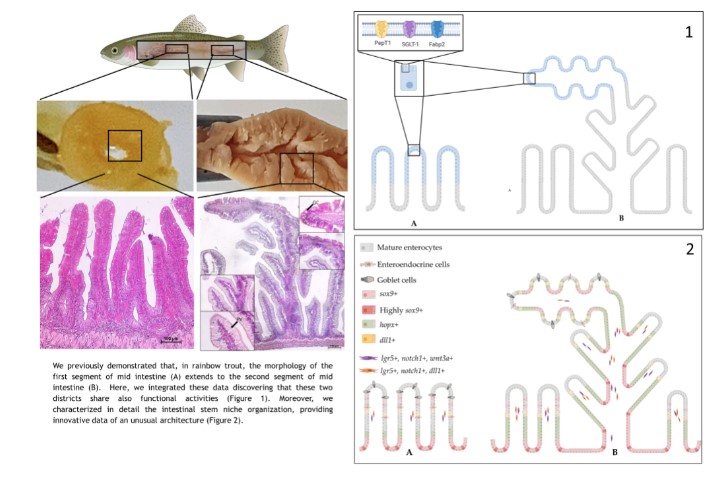We previously showed that, based on the frequency and distribution of specific cell types, rainbow trout (RT) intestinal mucosa is divided in two regions that form a complex nonlinear 3D pattern and have a different renewal rate. This work had two aims. First, to investigate whether the unusual distribution of cell populations reflects a similar distribution of functional activities. To this end, we determined the protein expression pattern of three well defined enterocytes functional markers: Peptide Transporter 1 (PepT1), Sodium-Glucose/Galactose Transporter 1 (SGLT-1) and fatty acid-binding protein 2 (Fabp2). Second, to characterize the structure of RT intestinal stem cells (ISC) niche and to determine whether the different proliferative rates correlate with a different organization and/or extension of the stem cells population. We studied the expression and localization of well-characterized mammal ISC markers: LGR5, HOPX, SOX9, NOTCH1, DLL1 and WNT3A. Our results indicate that morphological similarity is associated with similar function only between the first portion of the mid-intestine and the apical part of the complex folds in the second portion. Mammal ISC markers are all expressed in RT but their localization is completely different suggesting also substantial functional differences. Finally, higher renewal rates are supported by a more abundant ISC population.

